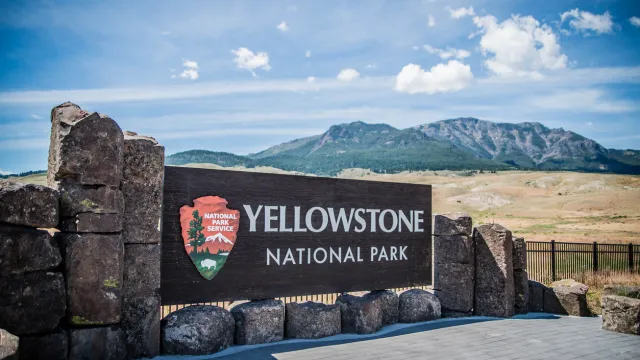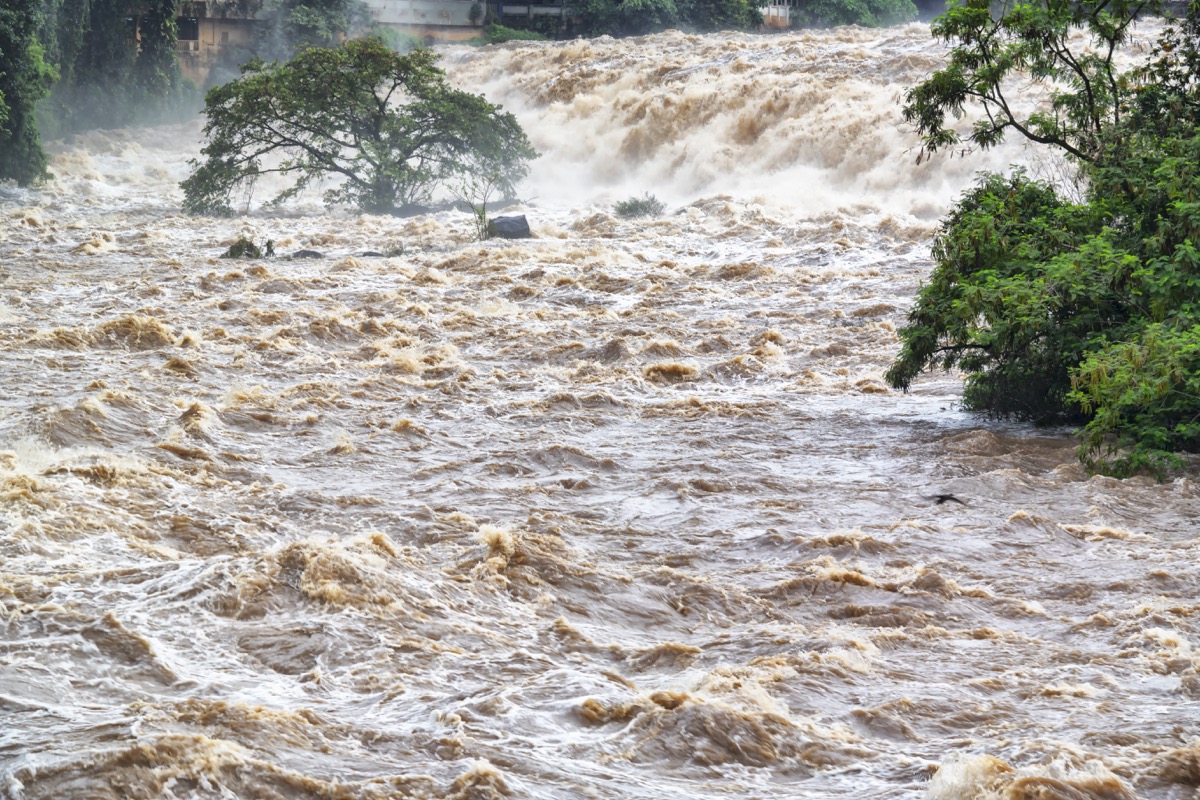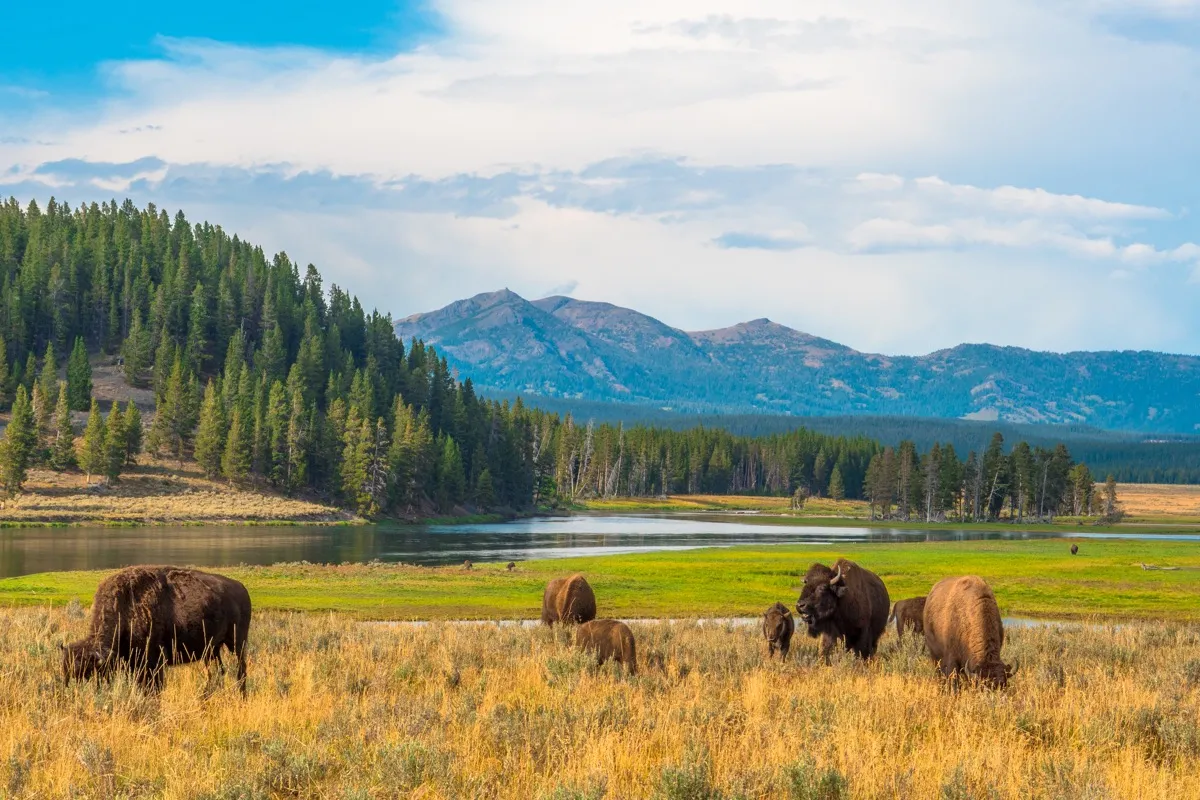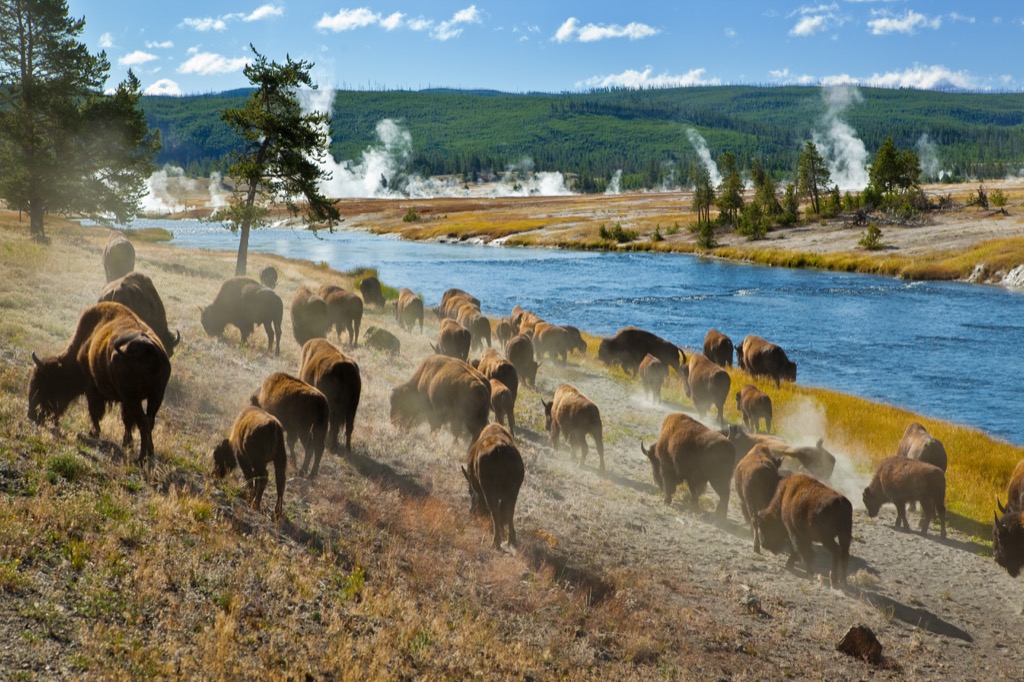Yellowstone National Park Officials Issue New Alert on “Unpredictable” Threat

Yellowstone’s practically endless natural beauty and grandeur have made it one of the most beloved sites in the National Park system. With more than 2.2 million sprawling acres, it’s home to more than half the world’s active geysers, 290 waterfalls, and over 1,000 miles of hiking trails that make it possible to take it all in, according to park officials. But just as with any outdoor experience, there are certain risks and hazards that can come with a visit. And now, officials from Yellowstone National Park have issued a new alert after a handful of recent events has landed some guests in the hospital. Read on to see what “unpredictable” threat has them urging visitors to use caution.
READ THIS NEXT: This Is the Most Dangerous Place to Be on a Cruise, Experts Say.
Yellowstone recently faced the effects of a devastating natural disaster.

Just weeks before the latest warning came from officials, Yellowstone National Park was devastated by flooding brought on by record-breaking rainfall in what officials called a “1,000-year event,” per The New York Times. Water surges significantly damaged the park’s infrastructure by taking out roads, washing out bridges, and blocking routes with mudslides and fallen trees. After evacuating more than 10,000 visitors, officials closed all five entrances to the park on June 13 to assess the destruction.
Fortunately, the National Park Service (NPS) announced a week later that the park would partially reopen on June 22, limiting access to Yellowstone’s south loop. They also instituted an Alternating License Plate System (ALPS) to help prevent overcrowding by only allowing guests to enter based on the last digit printed on their vehicle’s license plate.
However, on June 30, the NPS announced that it would be reopening the north loop and suspending the ALPS as of July 2, bringing back access to 93 percent of the park’s roadways even as two of its major entrances in the north and northeast remain closed. But even as visitors make their way back to Yellowstone, officials caution about another issue that has recently affected guests.
Yellowstone officials are warning of an “unpredictable” threat that’s common in the park.

On June 30, officials from Yellowstone announced that two visitors had been gored by a bison within three days at the park, marking the third such incident this year. In a press release, they said that “bison are wild and unpredictable” and urged to use caution whenever around them.
According to the official statement, the latest incident occurred on June 29 and involved a 71-year-old woman visiting from Pennsylvania. The animal charged her when she accidentally approached it while returning to her car, after which she was hospitalized with non-life-threatening injuries, the BBC reports. The previous day, a 34-year-old man was charged and thrown in the air by a bison while walking along a boardwalk with his family near the famous Old Faithful geyser, sending him to the hospital with an arm injury. And on May 30, a 25-year-old Ohio woman was hospitalized with puncture wounds when she was gored by a bison and thrown 10 feet into the air after approaching the animal on a boardwalk at Black Sand Basin.
RELATED: For more up-to-date information, sign up for our daily newsletter.
These are not the first incidents involving run-ins between visitors and bison.

The latest incidents are not the first time Yellowstone visitors have had close brushes with bison. According to a 2016 report from the Centers for Disease Control and Prevention (CDC), there was a record-high 33 reported injuries from the animals between 1983 and 1985, as well as five injuries between May and July 2015. In fact, bison have injured more people than any other animal in the park in its more than 150 years of operation, according to the NPS.
Here’s how you can avoid being gored by a bison.

Seeing the roaming bison is one of Yellowstone’s most iconic experiences. Still, the NPS advises that anyone who comes across the herding animals while visiting the park should always stay at least 25 yards away from them. The agency warns that bison can run three times faster than humans and will often respond to perceived threats by bobbing their heads, pawing the ground, snorting, or bellowing before charging.
“Wildlife in Yellowstone National Park are wild and can be dangerous when approached,” officials warn. “Give bison space when they are near a campsite, trail, boardwalk, parking lot, or in a developed area. If need be, turn around and go the other way to avoid interacting with a wild animal in close proximity.”
The agency also warns not to stand your ground if a bison ever appears to feel threatened. Instead, you should immediately walk or run away, using bear spray if the animal attempts to follow or chase you.